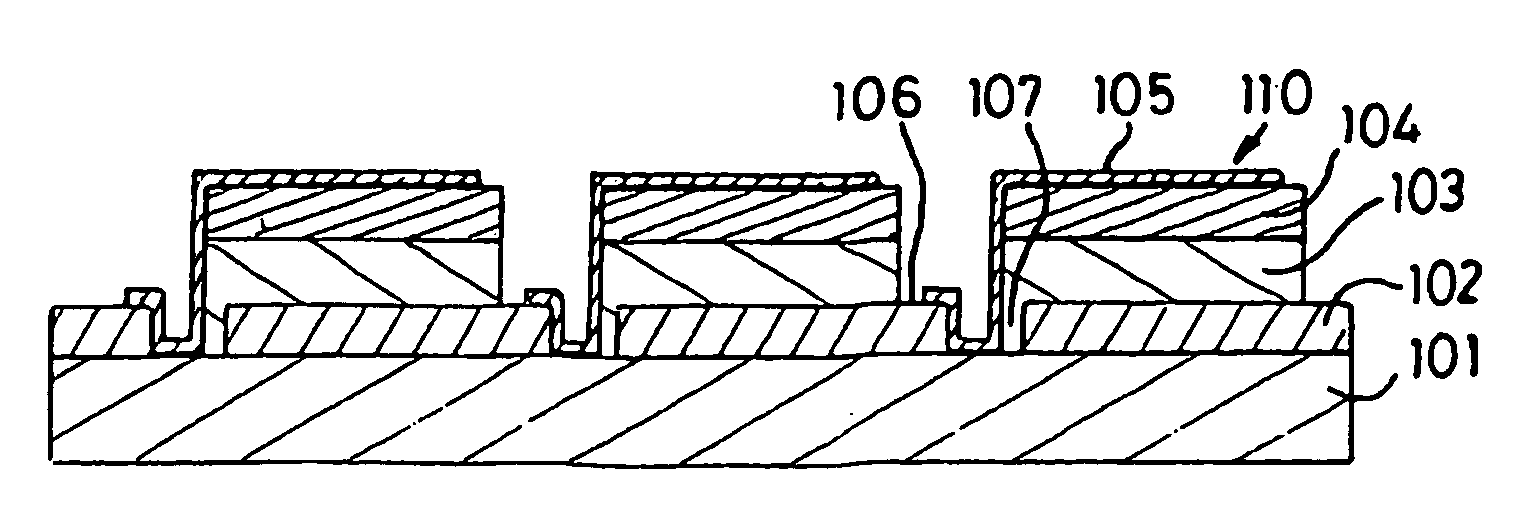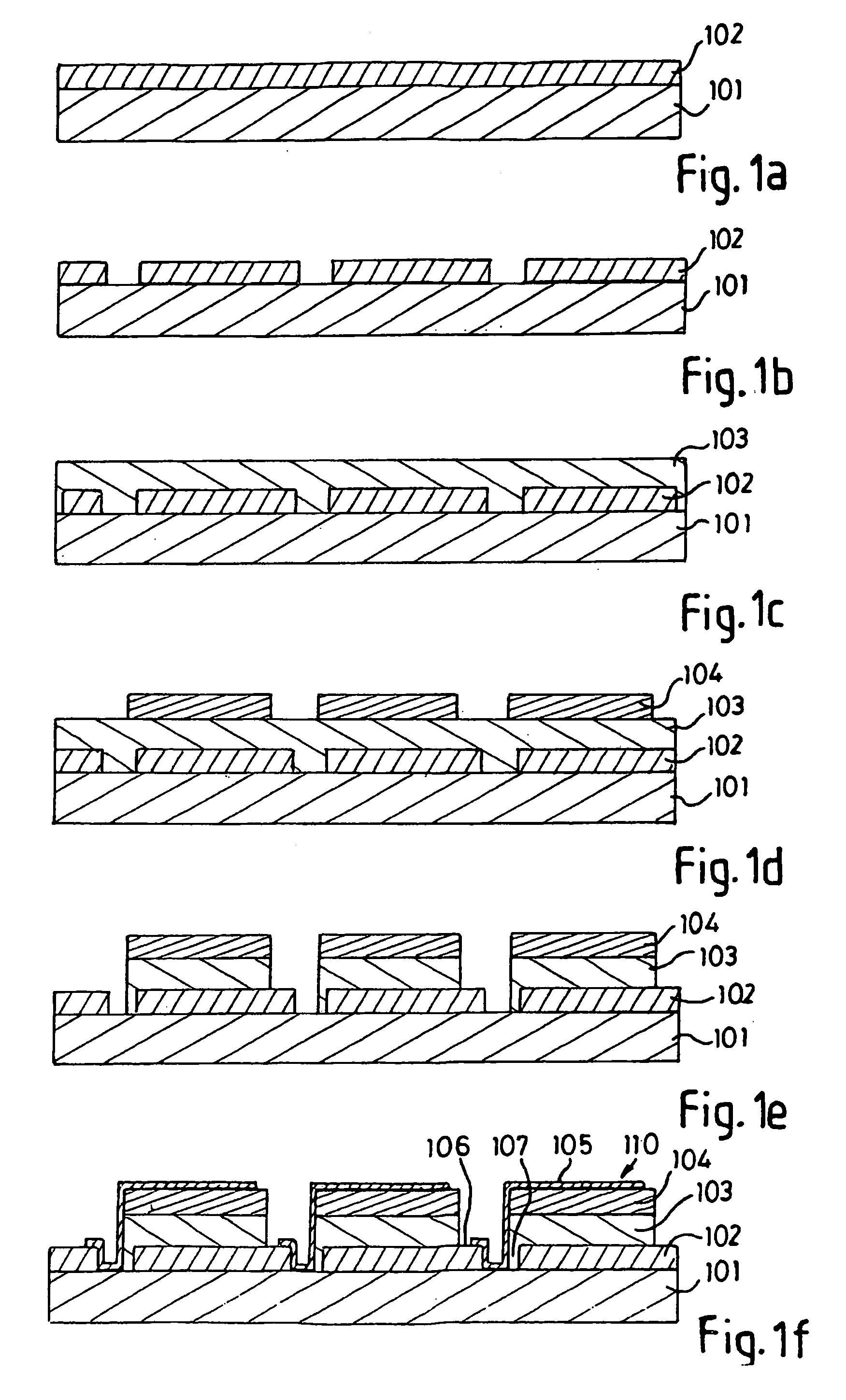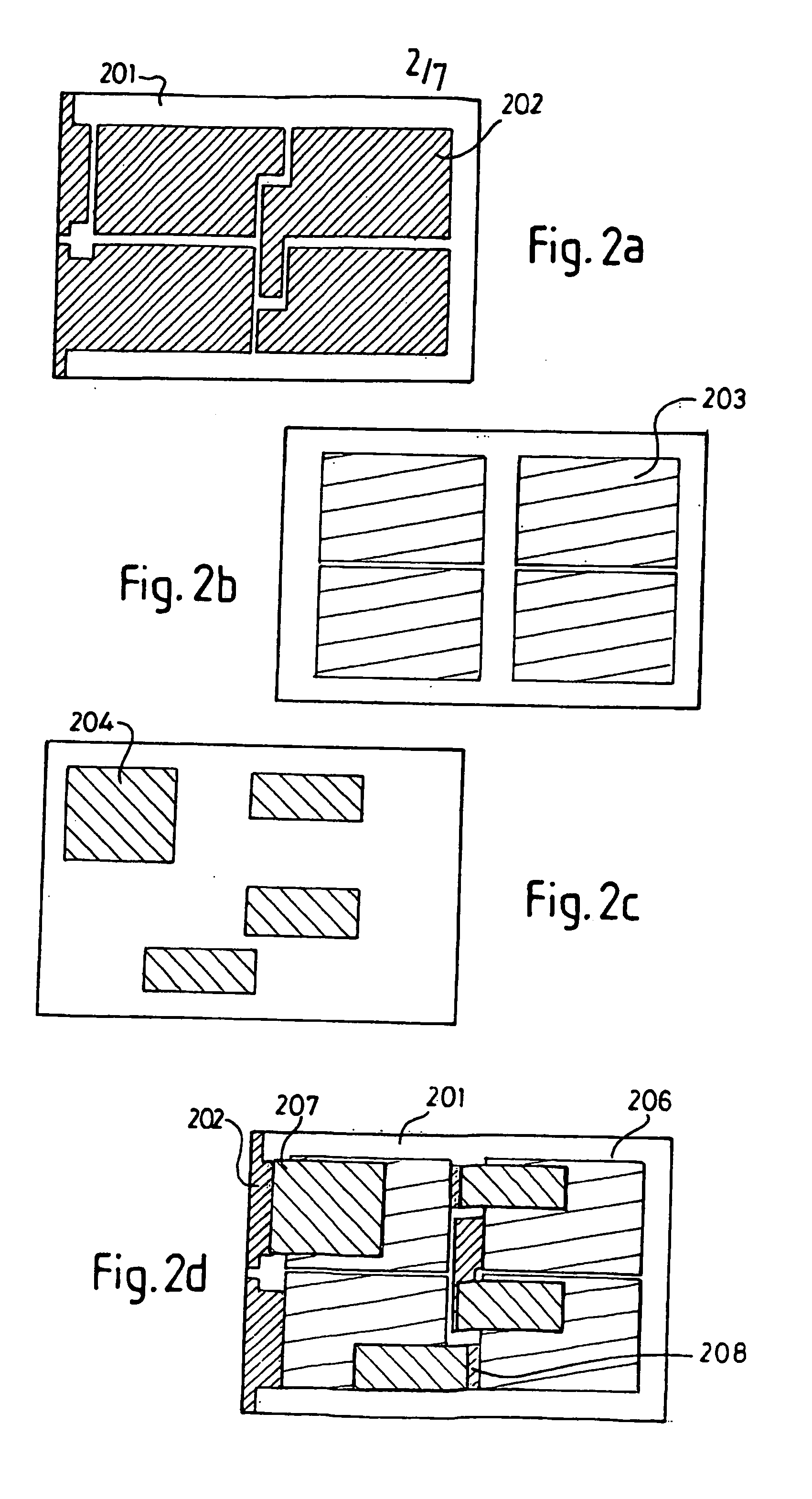Electrical connection of optoelectronic devices
- Summary
- Abstract
- Description
- Claims
- Application Information
AI Technical Summary
Benefits of technology
Problems solved by technology
Method used
Image
Examples
example
[0068] Series Connected Organic Photovoltaic Devices
[0069] A substrate patterned with ITO as shown in FIG. 2a) was cleaned in an ultrasonic bath for ten minutes at 60° C., baked for 20 mins at 110° C. and treated with UV / Ozone for 90 s. 10 ml of an aqueous solution of PEDOT:PSS (available from Bayer as Baytron) was spin-coated onto the substrate and the substrate was baked on a hotplate to remove remaining solvent. A layer of PEDOT:PSS having a thickness of 60 nm was deposited. A solution comprising a 1:1 blend of poly(3-hexylthiophene) and poly(2,7-(9,9-di-n-octylfluorene)-(4,7-di-2-thienyl-(benzothiazole)) at a concentration of 18 mg / l in toluene was spin-coated onto the layer of PEDOT:PSS. A layer of polymer blend of thickness 80 nm was deposited. Aluminium cathodes were deposited over the organic layers through a shadow mask. An initial deposition rate of 0.1 nms−1 was maintained to a total thickness of approximately 50 nm, after which the rate was increased to 0.5 nms−1. A tot...
PUM
| Property | Measurement | Unit |
|---|---|---|
| Electrical conductor | aaaaa | aaaaa |
| Semiconductor properties | aaaaa | aaaaa |
| Optoelectronic properties | aaaaa | aaaaa |
Abstract
Description
Claims
Application Information
 Login to View More
Login to View More - R&D
- Intellectual Property
- Life Sciences
- Materials
- Tech Scout
- Unparalleled Data Quality
- Higher Quality Content
- 60% Fewer Hallucinations
Browse by: Latest US Patents, China's latest patents, Technical Efficacy Thesaurus, Application Domain, Technology Topic, Popular Technical Reports.
© 2025 PatSnap. All rights reserved.Legal|Privacy policy|Modern Slavery Act Transparency Statement|Sitemap|About US| Contact US: help@patsnap.com



